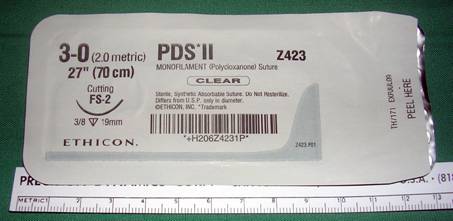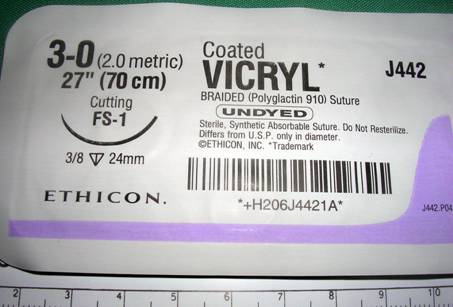
South Australian Medical Heritage Society Inc
Website for the Virtual Museum
Home
Coming meetings
Past meetings
About the Society
Main Galleries
Medicine
Surgery
Anaesthesia
X-rays
Hospitals,other organisations
Individuals of note
Small Galleries
Ethnic medicine
- Aboriginal
- Chinese
- Mediterran
Acknowledgment : This collection of surgical sutures was photographed with the kind permissions of Rose Wilson, Archivist of the Royal Adelaide Hospital Historical & Heritage Society, and Carol Saniotis nurse manager operating theatres TQEH.
Surgical sutures have been used for more than 4,000 years. Amongst the more exotic methods was the use of the pincers of beetles and ants reported from India . These were used to bring the wound edges together, and they stayed in place when the insect body was cut off. Later (©400AD) Sustra used flax, hemp, and hair. Galen (©150 AD) described the use of silk and animal gut, while Avicenna used pig bristles. It is likely that the use of animal gut was related to the use of gut in musical instruments.
These procedures were not sterile, and wound infections were common, and periodic vogues of cauterising became fashionable. Attempts at sterilisation in the 19 th. century were a step forward. Various types of “Catgut” usually obtained from sheep or cattle were most frequently used. Their absorption and thus tensile strength varied. Gut treated with chromic acid (chromicized) looses it’s tensile strength after 3 weeks or so, while plain catgut lasts only one week. Most sutures vary in diameter depending on their use and their thickness is indicated numerically. Thus 5/0 sutures have an approximate diameter of 0.1 mm. 0. suture diameter is 0.3 mm. And 4/0 sutures average 0.6 mm.
During the second half of the 20 th. the introduction of synthetic materials produced a variety of sutures both braided and mono-filament absorbable and non absorbable.
Thus Monocryl, PDS (polydioxone), Vicryl (polyglactin), and Dexon are absorbable while Nylon and Prolene are not. Stainless steel sutures are still occasionally used. Metal clips, originally Michelle clips, are now in common use, applied with a mechanical stapler. The use of adhesive strips is also common particularly in children. Both of these have the advantage of minimal skin penetration.
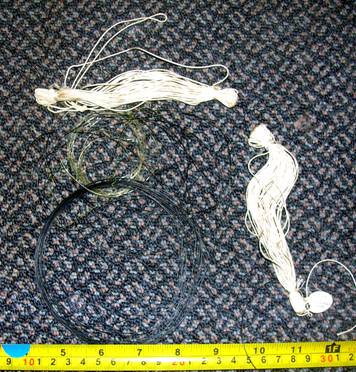 Coils of horse hair and nylon and lengths of silk worm suture.
Coils of horse hair and nylon and lengths of silk worm suture.
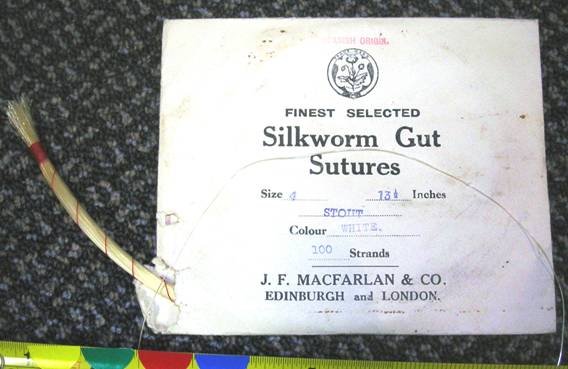
Silkworm gut sutures in original envelope

Glass vial with silk worm gut in a sterile solution

Reels of Mersilk and linen of various sizes usually sterilised in alcoholic solution prior to use. The suture diameter is indicated next to each reel.
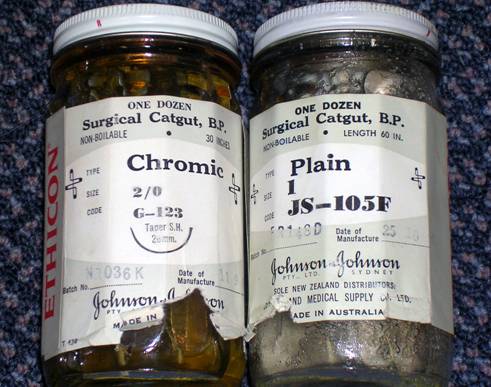
Glass jars containing vials of plain and chromic catgut
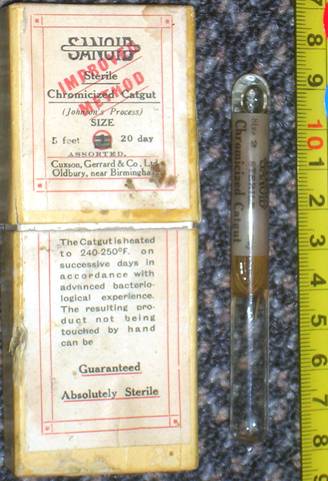
Large glass vial of chromic catgut
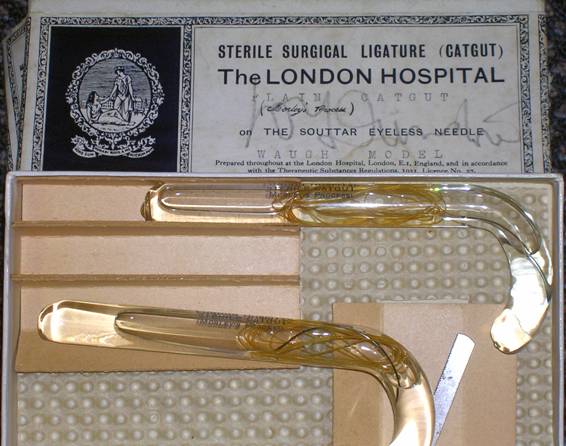
Catgut on an eyeless needle in the bend, & a file for opening
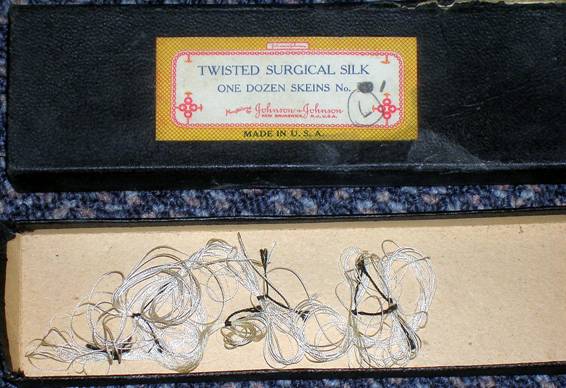
Skeins of surgical silk and box container
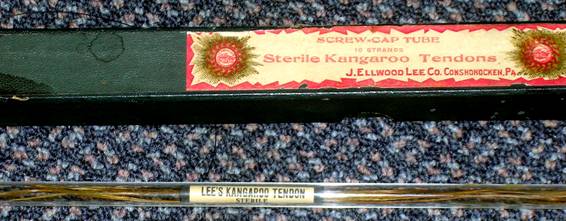
Kangaroo tendon in a screw cap tube
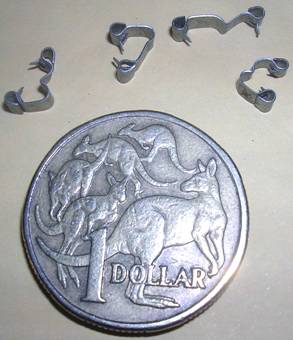
Michel’s suture clips after removal from a wound
A dollar coin indicates their relative sizes
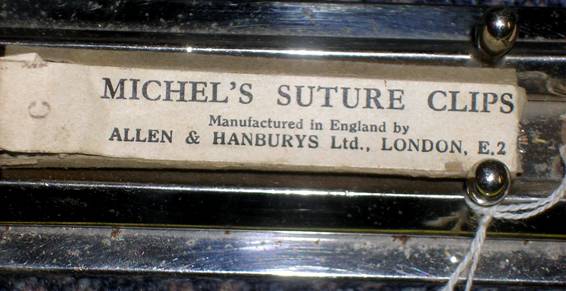
Michel’s suture clips in a holder
Currently used sutures, gamma ray sterilized in foil containers have now replaced catgut sutures. They are available as absorbable and non absorbable and are attached to an eyeless needle. The diameter of the suture, its length, the needle size and the trade name and the composition of the suture material are indicated on the container.
Three absorbable sutures currently used in bowel surgery and tissue approximation,
The upper 2 are monofilament while vicryl is braided
More recent skin closure methods
These skin closure appliances have been kindly provided by Mr. Tyson Osborne of the Ethicon division of Johnson & Johnson Company.
The closure of skin incisions has many options. The most common method uses a needle to pierce the two skin edges and tying a knot to approximate them. An other option is to use sub-cuticular sutures, which is a running suture under the dermis. This brings the skin edges together without any visible material suture. It can be absorbable or non absorbable. In the latter the ends of the suture are left exposed. Traction is applied to one end for removal. As there is no skin penetration the infection rate is lower.
An other option is to use metal clips, previously “Michel” clips were used in thyroid surgery, but recently several metal clip applicators have been developed which do not fully penetrate the skin.
Finally in wounds where skin edges are in contact but with out tension “Steristrips” can be used. Several types of tissue glues such as cyano-acrylates, have been recently developed. A rather unique method has been used where scalp wounds were closed by tying strands of patient’s hair close to the wound together.
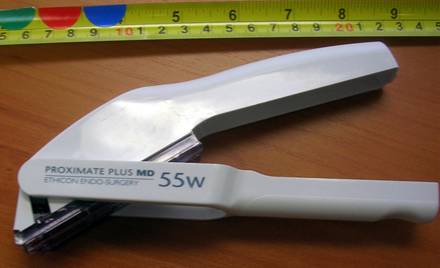
Common stapler. The end of the applicator is pressed against the skin. Once the lever is compressed the edges are stapled together.
The lower photograph shows 3 staples.
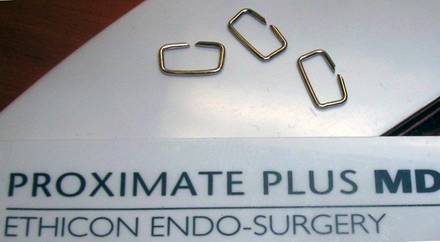
“Steristrip”, an adhesive strip placed over the incision. There is no skin penetration, and it is not painful.
If there is no tension on the cut, it is ideal for closure of minor wounds.
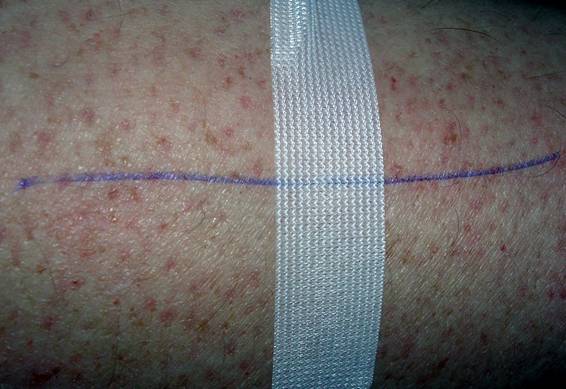
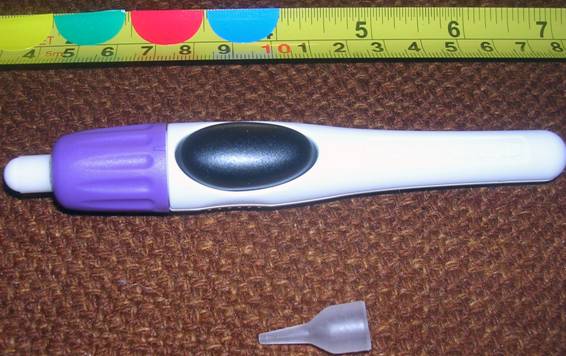
“Dermabond” Propen: The sealant is 2-octyl cyano-acrylate. A similar substance forms the basis of superglue. The photograph shows the applicator and nozzle, Pressure on the black button releases the sealant which is applied longitudinally over the wound edges. It sets in a few minutes and wears away in about 10 days.
-o0o-
